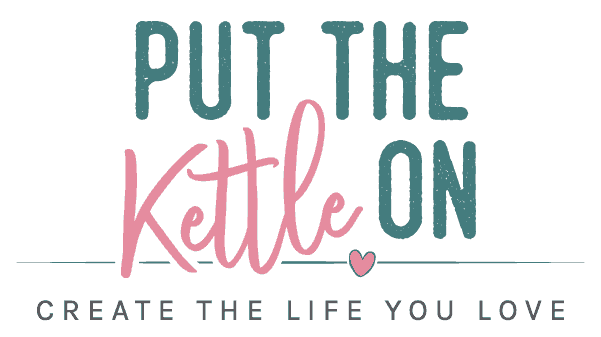How To Start a Journal + 15 Types of Journaling Formats

Have you ever felt the urge to start journaling but weren’t quite sure where to begin?
Maybe you’ve seen beautiful bullet journals on Instagram or heard about the transformative power of morning pages, and something inside you whispered, “I want to try that.”
Well, you’re in the right place.
Journaling is more than just keeping a diary – it’s a powerful tool for self-discovery, emotional wellness, and personal growth.
Whether you’re looking to process complex emotions, capture precious memories, or simply create a mindful daily practice, journaling can be your faithful companion on that journey.
In this comprehensive guide, I’ll walk you through everything you need to know about starting your journaling practice.
From choosing the right type of journal to finding your perfect writing rhythm, I’ll break down the process into simple, actionable steps.
Let’s explore how you can unlock the transformative power of journaling in your life, one page at a time.
–
This post contains affiliate links, meaning I may earn a small commission if you make a purchase through my links, at no extra cost to you. Disclosure info here.
Why Start a Journal?
What I love most about journaling is that it’s accessible to everyone. All you need is a pen and a notebook to get started.
Then you can use it as a personalized tool to support many areas of your life.
We all have so much going on in our lives and a journal can help us in so many ways.
Here are a few reasons why starting a journal is ideal. It allows you to:
- Create dedicated alone time to focus on something for yourself – the perfect form of self-care
- Support your emotional and mental well-being
- Get creative, especially if you like to doodle or sketch alongside your writing
- Release stress or worries onto paper to help you release these thoughts from your mind
- Practice gratitude for things you might otherwise take for granted
- Record important moments and milestones
- Stay on track to help you reach your goals
- Practice self-love by being mindful of your feelings
The list could go on and on. Essentially, the reasons to use a journal are endless.
Whatever you are focused on in life right now, you can use a journal to help you stay accountable and provide you with support along the way.
How To Start a Journal

Starting a journal might feel overwhelming at first, after all, you don’t want to be staring at a blank page wondering what to write.
So, here are a few simple steps to help guide you and you’ll soon be well on your way to creating a meaningful journaling practice that works for you.
1. Decide On Your Why
First, understand why you want to start journaling right now. Understand your purpose for journaling today.
Knowing your why will help you decide on the type of journaling you could focus on (more details below).
Here are some different scenarios of why you might want to start a journal…
- Going travelling and you want to record your adventures
- Practice gratitude journaling
- Release thoughts and worries
- Feel more creative
- Create a better morning routine or bedtime routine
- Freewrite whatever comes to mind – good if you don’t want to stick to one form of journaling
2. Find a Notebook and Pen
This is a simple one. You can easily pick up a simple journal/notebook that speaks to you – something floral, minimal, plain, colourful, etc.
You most likely already have empty notebooks around your house, so just grab one of those to get started.
3. Decide When You Want to Journal
This isn’t a must as many people don’t want to be tied down to a specific time to write, but some do prefer adding journaling to part of their daily routine.
So, if you feel a pull to journal at a certain time – say first thing in the morning, then go ahead and start writing then.
The key is if you want to stay consistent with your journaling practice and make it a regular habit, it can be helpful to dedicate a certain time of the day for journaling. Try different times and see what works best for you.
4. Use Journal Prompts for Writing Inspiration
Journal prompts can be a fantastic way to start journaling. You simply follow the writing prompt and either answer the question or use it as inspiration to start writing.
Here are some great examples of journal prompts you could try:
- What made you smile today?
- How did you show yourself love today?
- What could have gone better today and what change will you make for tomorrow?
- How can you be kinder to yourself this week?
- What are you proud of accomplishing recently?
Also, check out the many journal prompts resources I have on the blog:
5. Let Rules Go Out The Window
Even though I have provided ways to start journaling, just know there are truly no rules.
Journaling is your safe space to write what you want when you want. So you get to decide
15 Types of Journaling (Find the One That Fits You!)

Journaling isn’t one-size-fits-all, and that’s the beauty of it. There are so many ways to journal, depending on what you need in the moment.
Whether you want to organize your thoughts, track progress, or just let your creativity flow, there’s a style that’s perfect for you.
Here are 15 different types of journaling to explore:
1. Gratitude Journaling
A simple way to shift your mindset by writing down things you’re thankful for each day.
The best way to start is by simply writing down 3 to 5 things you are grateful for each day.
Example:
- My morning coffee was extra delicious today
- A kind text from a friend
- The cozy blanket I curled up in after work
👉 You can also use journal prompts for gratitude which are the perfect way to get motivated or provide you with writing inspiration.
2. Freewriting (Brain Dump)
No rules, no structure, just write whatever comes to mind without stopping or editing. It’s a great way to clear mental clutter and get your thoughts flowing.
Example:
“The rain is tapping against the window, and I feel like I should be productive, but I just want to sit here and listen to it…”
3. Morning Pages
Three pages of unfiltered writing first thing in the morning—before emails, before social media, before the world gets in your head.
It helps you process emotions, spark creativity, and start fresh each day.
Example:
“I woke up feeling groggy, but I’m hoping this journaling wakes up my brain. I had a dream about flying—what does that even mean?”
4. Bullet Journaling
A mix of planning, goal setting, and journaling, all in a neat, dot-grid format. You use symbols and short notes to track tasks, habits, and memories.
Example:
- Finish work project
- Buy groceries
- Idea: Start a new book
5. Dream Journaling
Ever wake up from a wild dream and wonder what it meant? A dream journal helps you capture those details before they fade, giving you insight into your subconscious.
Example:
“I was in my childhood home, but it had endless rooms. There was a blue door I couldn’t open… I wonder what that symbolizes?”
6. Travel Journaling
Write about your adventures, the people you meet, the food you try—anything that makes your trip special. You can even tape in tickets, receipts, or sketches.
Example:
“Venice, Day 2: Had the best cappuccino at a tiny café by the canal. Got lost in the alleys and found a hidden bookstore—absolute magic.”
7. Nature Journaling
A peaceful way to slow down and connect with the world around you. You can jot down observations, sketch, or even press leaves and flowers into your journal.
Example:
“Spotted a red cardinal on my morning walk. The air smelled like fresh pine, and the sky was the perfect shade of blue.”
8. Mood Journaling
Track your moods to recognize patterns and understand what lifts you up or drags you down. Great for mental health and self-awareness.
Example:
Monday – Feeling sluggish, didn’t sleep well, need more rest
Tuesday – Motivated, finished a big project, feeling accomplished
👉 Related: Access my free printable mood tracking worksheets to get you started
Also, check out my mood-tracking journal below or learn more here.
9. Food Journaling
Whether you’re tracking meals, trying new recipes, or just recording your favorite eats, a food journal can be a fun (and delicious) way to document your food journey.
Example:
“Tried a new lasagna recipe today—subbed spinach for basil, and it was so good. Next time, I’ll add extra garlic.”
10. Reflection Journaling
Take time to look back on your week, month, or year to see how you’ve grown and what lessons you’ve learned.
Example:
- What went well this week?
- What challenges did I face?
- What’s one thing I want to do differently next week?
11. Art Journaling
If words aren’t enough, add drawings, paintings, or collages to express your thoughts and emotions in a creative way. No art skills required—just have fun.
Example:
A watercolor background with pressed flowers and the words “Breathe Deeply” written over it.
12. Reading Journal
Love books? Keep track of what you’re reading, jot down favorite quotes, and reflect on the stories that stick with you.
Example:
Book: The Midnight Library
Favorite Quote: “Between life and death, there is a library.”
Thoughts: This book made me think about all the paths my life could take…
13. Fitness Journaling
Track your workouts, progress, and how you’re feeling along the way. Seeing your growth on paper is a great motivator.
Example:
5K Run – 28:30 (new personal best)
Energy Level: 8/10
Notes: Felt strong—new shoes were a great investment.
14. Prayer/Spiritual Journaling
A space for prayers, reflections, or anything that deepens your spiritual journey.
Example:
Scripture: Psalm 23
Prayer Focus: Gratitude for the small joys in my life today
Reflection: Finding peace in uncertain times
15. Project Journaling
Working on something big? Use a journal to track your progress, brainstorm ideas, and troubleshoot challenges along the way.
Example:
Garden Project – Week 3
- Built raised beds
- Ordered soil mix
- Next: Install irrigation system
Tips for Your Journaling Practice

1. Look for the silver lining:
When writing about difficult thoughts, look for the silver lining when possible.
2. Give yourself enough time to write, without interruption:
Aim for at least a 5 to 10-minute writing session.
3. Enjoy the process:
Think about what this quiet time gives you and enjoy understanding yourself more each day.
4. Experiment with different styles:
Don’t feel like you have to stick to just one journaling method.
Try different types, such as gratitude journaling, freewriting, or art journaling, to see what resonates with you. Switching things up can keep the practice fresh and engaging.
5. Make it a judgment-free zone:
Your journal is for you and you alone. Don’t worry about grammar, spelling, or making it look “perfect.”
Embrace messy handwriting, unfinished thoughts, and raw emotions—it’s all part of the process.
Looking for More Journaling Inspiration?
Check out these helpful resources:
Pick Up One of My Cute Journals (with prompts):
- 52 Week Gratitude Journal
- Love Yourself First: Daily Guided Journal
- Today I Choose Joy: Mood Tracker
Before you Grab Your Empty Notebook…
Tell me: What kind of journaling are you going to try? Leave a note in the comments below to inspire others!

About Yolanda
Website Owner / Content Creator
I’m passionate about helping you live life to the fullest so you can choose to find happiness and purpose. Learn how to CREATE THE LIFE YOU LOVE with intentional living and discovery of the simple things life has to offer. Learn more…



